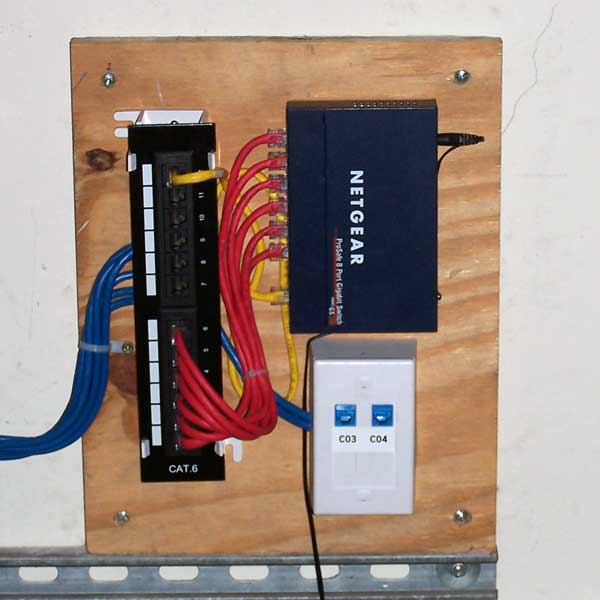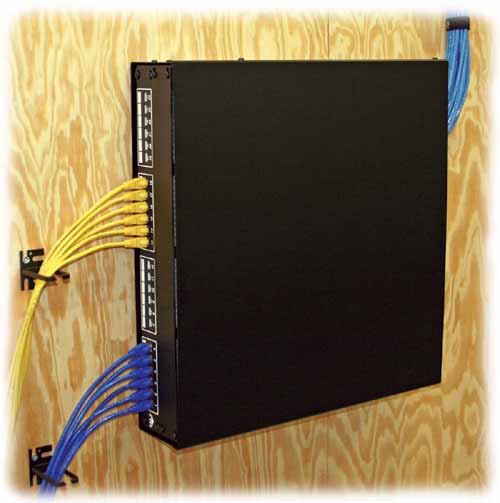BeachBum
Regular Contributor
I am currently building a house from the ground up and want to get input on the setup of my network. The house has already been designed and approved, and is just now in the beginning stages of build. It will be a three story, 2600+ sqft single family home.
I have not been able to do much network planning so far, but did get to have cable “runs” designed into the home. The on-site contractor will pull the cables. I have spec’d Cat6a cable for now, but could change/upgrade that still. I can get 300Mb/20Mb in my neighborhood, though I think fiber is being installed soon.
I have had at least 1 ethernet cable run to each room and location where it is required, some rooms have multiple runs. TV/Coax is run to all the needed locations as well. All of this will terminate in the 2nd floor laundry room junction box (didn’t have room for a server closet in the house). I also have ethernet cables run for a planned IP POE security cameras.
Here is the tally of runs:
Possible expected devices that will be on the network:
Home related uses and needs :
Work related uses and needs:
So far this is what I believe I will need:
My questions:
I have not been able to do much network planning so far, but did get to have cable “runs” designed into the home. The on-site contractor will pull the cables. I have spec’d Cat6a cable for now, but could change/upgrade that still. I can get 300Mb/20Mb in my neighborhood, though I think fiber is being installed soon.
I have had at least 1 ethernet cable run to each room and location where it is required, some rooms have multiple runs. TV/Coax is run to all the needed locations as well. All of this will terminate in the 2nd floor laundry room junction box (didn’t have room for a server closet in the house). I also have ethernet cables run for a planned IP POE security cameras.
Here is the tally of runs:
- 27 Ethernet runs (15 of these are POE IP Cameras)
- 12 Coax/TV runs
Possible expected devices that will be on the network:
- 6-8 4k HD TV’s
- 4-6 HTPC’s
- 4-5 Desktop PC’s (Mac, PC, Linux)
- 10-12 IP POE Cameras (1080p)
- 1-2 Laptops
- 4-8 Mobile Phones
- 2-3 Tablets
- 1 File/Media Server (RAID)
- 1 File Server Back Up (RAID)
- 2-4 IOT Devices (Nest etc)
- 1-2 Game Stations (Playstation, Xbox, etc)
Home related uses and needs :
- Online Entertainment Streaming (Netflix, IPTV, etc)
- Media streaming (from media server)
- General computer use (web surfing, emailing, etc)
- Gaming (playstation, etc)
- Transfer large files over LAN & WAN (FTP files ~1-2GBs)
- Access network remotely through VPN
- Parental control ability
- IOT devices
- Wifi network for iDevices
- VPN Client (VPN client at router, policy based)
Work related uses and needs:
- Working from the file sever on the desktops (Graphics/Video files and MS Office files)
- VPN Server & Client (policy based) usage
- VPN connection to remote office - Access email and files on remote office server
- Transfer large files over LAN & WAN (FTP files ~1-2GBs)
So far this is what I believe I will need:
- Firewall/Router (PFSense SG-4860?) (Want to run PFsense with Snort)
- Switch w/POE
- 2 Wifi access points
- Modem
- Other?
My questions:
- What hardware will I need?
- Will a PFSense SG-4860 be enough to handle the above? If not what should I use (I can build my own if needed). (Keep in mind the need for VPN server & client usage)
- What type of switch & manufacturer should I look at?
- What access points?
- Buy my own modem or use ISP’s?
- Cat6a cable ok? What AWG?
- Good vendors to purchase equipment at?
- What else am I missing/not thinking about?
- Advice?



